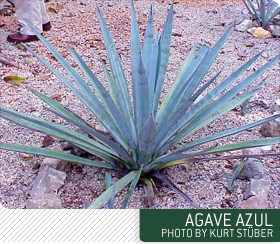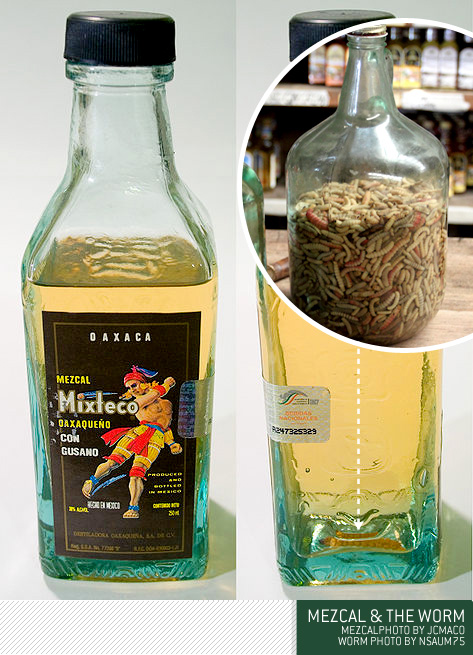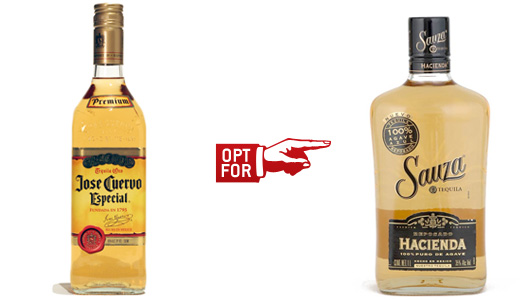Quite possibly the only spirit more universally infamous than good ‘ol Jagermeister for its face-numbing and night-erasing effects, is the south-of-the-border spirit of choice; tequila. Your stomach may already be clenching as you flash back to a raucous tequila-fueled night out with the boys you almost remember. In Mexico, however, tequila is not just some boozehound’s party fuel; it’s a way of life, one that can be enjoyed among all social classes.
Just as with scotch, fine cigars, even craft beers for Americans, a real Mexican gentleman understands that tequila is about texture, aroma, subtlety, flavor, status, and above all, culture (Ok, so getting drunk may have a little to do with it). In this article, we here at Primer seek to introduce you, formally, to one of the most misunderstood liquors in the world via our guide to drinking tequila.
First things first: What is tequila?

Region also determines authenticity. Much like Champagne, in order for Tequila to really earn its name, it MUST be made from plants that come from a specific region of Mexico where the Agave plant grows natively (the city of Tequila, and a few other specific areas).
We can trace the earliest roots (no pun intended) of distilling agave to make booze all the way back to the ancient Aztec people. Their drink, Pulque (POOL-kay), is among the earliest known ancestors to tequila. When the Spaniards came, they adopted the drink and began utilizing some of their own European techniques for distilling. This slowly evolved into what is modern-day tequila. Other liquors, like Vodka, have had a history of (sometimes heated) debate over their origins, but there is no question; Tequila is Mexican.
What’s on the label, and what it means.
The tequila you buy will either be “100% Agave” or “Mixto” (MEEKS-toe). With 100% Agave, the flavors and notes will be very “up front.” If you are a fan of robust, exotic flavors, this will be the type of tequila you want. Mixto, on the other hand, has its flavor “cut” by up to 49% sugar and water. This will NOT make the tequila sweet, only less in-your-face. It will have a more subtle flavor, whose notes will linger for longer. Neither is better or higher-end than the other, it’s simply a matter of preference and occasion.
Beyond the two basic categories we just mentioned, there are also about a half dozen different types of tequila within each. It may sound confusing at first, but trust me, it’s not rocket science.
Here are the one’s you’ll encounter the most.
Tequila Plata (AKA Silver, White or Blanco)
This clear tequila is not aged before storing, and will have the simplest flavor. This is a popular type for mixing since it will “disappear” most and not overwhelm the flavor of the drink. Common at the high, middle, and low-end, beginner shot-shooters (is that a thing?) will like this for its smoothness. Simply put, this is tequila for vodka drinkers.
Tequila Reposado
Tequila Reposado is aged in OAK for 2-11 months before storing or distribution. Among the more popular types of tequila, this medium-amber colored spirit will have a light, but complex flavor, making it the ideal “All Purpose” tequila. You can shoot it, you can sip it, or you can mix it.
Tequila Oro (Gold)
This light amber colored tequila, also called “Joven,” is a mixture of Tequila Plata and Reposado. It’s mostly found in the low to middle-end categories. It’s also usually the strongest, as far as alcohol contents goes and the harshest, as far as flavor goes.
Tequila Añejo
Pronounced “On-YAY-ho,” this is the most complex-flavored type of tequila. It’s aged for at least a year (Extra Añejo is aged 3+ years) in a small oak barrel, giving it a robust, smoky flavor and bright floral undertones (try not to sound too pretentious when repeating that to friends). If Plata is “tequila for vodka drinkers,” this is the tequila for gin fans (and people like me, who just really like the taste of tequila.)
How to Drink It
This actually seems to be the biggest mystery among the uninitiated; nobody seems to know how to drink tequila outside of margaritas and shots.
You can apply most of the same rules to tequila that you would to whiskey or scotch. If drinking something good, an aficionado will drink 3-5oz. out of a snifter (a low-ball glass also works) served at room temperature, or on the rocks. That’s it. There’s no need to shake the glass or sniff it, the aromas will become more prevalent as you are drinking. One drink should last you most of the night (gentlemen sip, folks).
Remember, the good stuff is to be enjoyed, not pounded. If the flavor is too intense for you, salt about an inch of your glass (don’t salt the whole thing) and have a slice of lime (preferably key lime) on hand as a quick chaser. A good tequila should have a warm kick to it, and it should start in your chest (don’t ask me how the timing works, it just does.)
When taking a shot, always remember to raise your glass before drinking if you are with company. It’s not required that a full, heavy hearted toast be delivered upon every shot, but it’s generally considered a courtesy to give your fine drink and even finer company the nod. If everyone is taking a shot (this is where the fun begins!), then a good customary toast is, in unison, “Parriba!” (everyone raises their drinks) “Pabajo!” (everyone touches the bottom of their shot-glass to the table) “Pal Centro!” (drinks meet in the center) “Y Pa Dentro!” (Drink). Once again, if the flavor is too intense; salt, shot, lime.

What the heck is “Mezcal?”
Remember when I said that REAL tequila is made from BLUE agave and only in very specific regions? Well, when those guidelines are not followed, what you have is mezcal (Mess-Call). Made from the more common Maguey plant (a cousin to the blue agave), mezcal has a smoky and MUCH harsher taste to it. It is not a strict rule, but generally speaking, mezcal is considered lower-quality and less refined than tequila.
OK…so we’re all curious about The Worm!
Simply put, the worm is a gimmick. It started in the 40’s to add a “hand crafted authenticity” appeal to sell cheap mezcal to tourists. It’s important that you know that real tequila NEVER (EVER) has a worm in it. When you see a worm at the bottom, THAT IS NOT TEQUILA, and it’s likely not even very good by mezcal standards.
If you just can’t resist the allure of consuming a fermented and preserved booze-worm, keep in mind that you will very presently be on-your-ass-drunk and likely vomiting. I don’t know the chemistry behind it, but that little worm PACKS A PUNCH.
What everybody is drinking, and what YOU should drink.
When shopping for tequila, here are some brand recommendations (remember, these are based on my opinions and experience. If yours differ, that is OKAY.)
HIGH END
What everyone is drinking: Patron Silver
Very likely the most popular top-shelf tequila today, Patron is very quickly becoming something of an icon in bars and clubs.
What YOU should drink: Don Julio Reposado
Look, I know a lot of you love Patron because it’s so smooth. Please understand, THAT IS WHAT’S WRONG WITH IT. Be honest, how often is the most popular thing also the best (Bud Light, anyone?) A good tequila SHOULD have a warm kick to it, and it should taste LIKE TEQUILA. Don Julio, in my humble opinion is the perfect choice for someone who wants to enjoy tequila for what it is. The flavor will be complex, and will tell the world that you don’t want what everyone else is drinking; you want what’s GOOD. When you’re ready, graduate to Don Julio Añejo.
MIDDLE END
What everyone is drinking: Jose Cuervo Especial
Cuervo is the best-selling brand of tequila in the world (Bud Light, anyone?)
What YOU should drink: Sauza Hacienda
Sauza Hacienda is a fantastic little drink. At around $25 for a good-sized bottle, this reposado tequila has all the taste and quality of a top-shelf tequila at a price that can keep a party going all night. It’s fantastic in mixed drinks, and perfect to shoot. It’s Sauza’s best kept secret.
LOW END
Don’t drink low-end tequila. JUST. DON’T.
My grandmother once said to me “Tequila is the most unifying aspect of our culture. (In Mexico) even our very language can differ from region to region, and from wealthy to poor. Tequila though, is universal. The richest man can raise his drink to the poorest, and while the tequila flows, all will be well.” Even if you’re not Mexican, take a little pride next time you sit down to drink North America’s first native spirit. Salud.




















